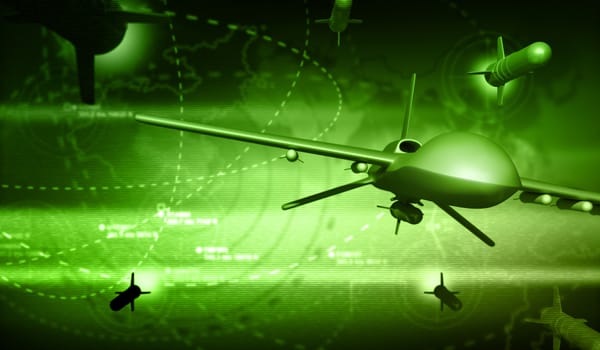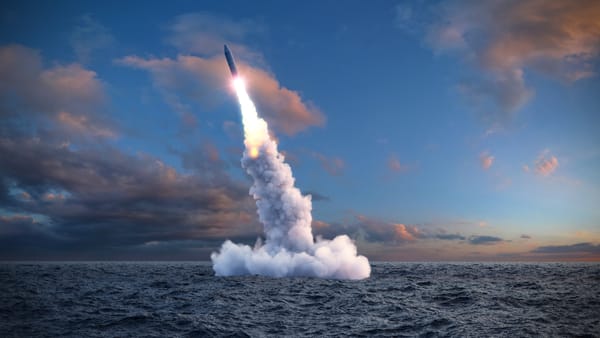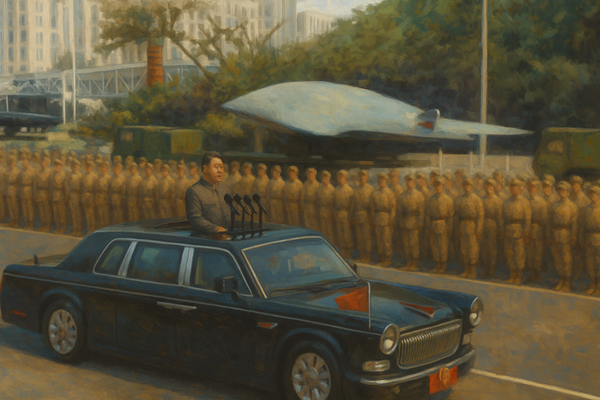The Changing Nature of Intelligence: From Ancient Craft to Algorithmic Ecosystem
Intelligence is evolving from a secret state craft into a global, data-driven ecosystem where insight, not access, defines advantage.

- Intelligence is undergoing a structural transformation driven by digital abundance, artificial intelligence, and the erosion of state monopolies over information.
- Open-source data, private sector analytics, and global commercial sensing are reshaping how intelligence is collected, verified, and legitimised.
- The future of intelligence will depend on integration—of humans and machines, secrecy and transparency, and state and non-state actors—within a plural, interconnected global ecosystem.
Intelligence has always mirrored the societies and technologies that produce it. From the coded correspondences of imperial courts to today’s algorithmic sensors and data brokers, it has evolved not as a linear progression but as a series of adaptive responses to new forms of power, communication, and risk. Each transformation has altered not only how information is gathered and interpreted, but also who participates in the act of knowing.
The contemporary debate, centred on artificial intelligence, open sources, and the diffusion of analytic capacity, represents another of these inflection points. Yet to understand its trajectory, it is worth remembering that the logic of intelligence has never been fixed. It has shifted continuously with the architectures of statecraft, the scale of conflict, and the technologies that connect or divide human systems.
From Ancient Networks to Industrial Bureaux
The earliest intelligence systems were extensions of diplomacy and warfare. Ancient Chinese, Indian, and Mediterranean rulers all embedded espionage within the machinery of governance. Sun Tzu’s injunction to “know the enemy and know yourself” described not a profession but an epistemology, an understanding that foresight could substitute for force. Kautilya’s Arthashastra codified agents, informers, and couriers as instruments of rule, while Rome’s frumentarii transformed logistical networks into channels of surveillance. Intelligence was local, human, and continuous with administration.
Industrialisation changed this equilibrium. Telegraphy, railways, and mass bureaucracy created the capacity to coordinate information at scale. The First and Second World Wars formalised dedicated intelligence institutions, including the British Secret Intelligence Service, the American Office of Strategic Services, and their counterparts elsewhere, establishing the template of professional services embedded within national hierarchies. The Cold War then institutionalised global reach and enduring secrecy, with technical collection, compartmented analysis, and a rigid demarcation between “inside” and “outside” knowledge.
Post-Cold War Transformation
The attacks of 11 September 2001 exposed the limits of that compartmented order. Intelligence designed to manage great power confrontation struggled with distributed, networked adversaries. The organisational response, creating integrative architectures such as the United States Office of the Director of National Intelligence and parallel fusion structures across Europe and Asia, marked a philosophical as well as bureaucratic shift. Intelligence ceased to be solely a sovereign function of states in confrontation; it became a whole-of-society endeavour linking law enforcement, homeland security, financial regulation, and the private sector.
Other nations adapted differently. The United Kingdom’s Joint Terrorism Analysis Centre, Singapore’s National Security Coordination Secretariat, and Australia’s multi-agency fusion centres all re-engineered intelligence as a collaborative, data-driven enterprise. In parallel, non-state actors, including terrorist networks, investigative journalists, and non-governmental organisations, learned to exploit global connectivity for their own intelligence purposes. The boundaries of the profession began to erode.
The Fourth Revolution: Data Abundance and the Algorithmic State
The emerging fourth intelligence revolution is shaped less by a single adversary than by the convergence of two structural forces: digital omnipresence and computational interpretation. Artificial intelligence, automated sensing, and near-real-time data fusion have collapsed the distinction between collection and analysis. Where once the bottleneck lay in acquiring information, it now lies in filtering and contextualising it.
Geospatial intelligence illustrates the transition. For much of the twentieth century, only governments could afford orbital reconnaissance. Today, commercial constellations, airborne sensors, and volunteered geographic data create continuous coverage of most of the planet. The strategic advantage no longer stems from exclusive access to imagery, but from the ability to orchestrate multiple sources, validate them rapidly, and integrate spatial data with cyber, financial, and social indicators.
Similarly, the explosion of open-source information, ranging from social media to telemetry from consumer devices, has redistributed analytic capacity. Municipal agencies, universities, private companies, and even online collectives can now perform intelligence-grade reconstructions of events. This diffusion of capability has made intelligence both more transparent and more contested. States must operate within an epistemic environment where their monopoly on knowledge has disappeared.
The Challenge of Trust and Verification
Abundance has not meant clarity. Open sources generate unprecedented visibility, but also an expanded surface for manipulation. Synthetic media, coordinated amplification, and data pollution can distort the analytic process at its foundation. Verification has become a primary discipline. The craft of intelligence now depends on distinguishing reliability from velocity, separating signals of intent from background noise, and maintaining analytic rigour in environments where information itself is weaponised.
The democratisation of collection also complicates legitimacy. When intelligence agencies and private entities share the same data environment, the lines between surveillance, research, and security blur. Public expectations of transparency collide with enduring requirements for secrecy. Over-classification undermines confidence, yet excessive openness can compromise sources and methods. Finding a sustainable equilibrium, one that protects capability while sustaining trust, is both a strategic and ethical task.
Human Capital and Organisational Adaptation
Technology does not eliminate the human factor; it magnifies its consequences. Recruiting and retaining technical talent within intelligence institutions remains a universal challenge. Salaries are not the decisive variable: mission, autonomy, and the opportunity to work with unparalleled data often outweigh pay differentials. However, organisational cultures built for secrecy and hierarchy can struggle to accommodate agile, experimental mindsets.
Successful agencies have paired internal reform with external collaboration, embedding data scientists alongside traditional analysts, opening controlled research partnerships with academia, and fostering ecosystems where innovation can occur within security constraints. The emphasis is shifting from ownership of assets to management of networks, both human and technical, that can generate insight faster than competitors.
Civil Exposure and Societal Resilience
One of the most consequential changes in the new intelligence landscape is the direct exposure of civilians to foreign intelligence activity. The mass compromise of personal data, financial, medical, and behavioural, creates enduring vulnerability not only for individuals but for states whose populations become exploitable data reservoirs. Yet democratic governments face clear limits on domestic monitoring. The logical alternative is a resilience strategy grounded in public literacy and structural regulation, constraining secondary data markets, demanding transparency from brokers and platforms, and integrating cybersecurity and media-forensics education into civic life.
The biological domain underscores the difficulty. Monitoring emerging pathogens, genetic data flows, or potential bio-engineering misuse requires the fusion of health, scientific, and security intelligence without violating privacy or trust. This cannot be accomplished by governments alone. It demands cooperative architectures linking state agencies, private laboratories, and non-governmental research institutions under jointly agreed norms of confidentiality and disclosure. Building these architectures before the next crisis is one of the defining tests of strategic foresight in this century.
Artificial Intelligence and the Analytic Frontier
Machine learning already performs tasks once reserved for junior analysts, such as entity resolution, pattern recognition, and predictive flagging. The next phase will see generative and reasoning systems contributing to hypothesis generation, scenario modelling, and probabilistic forecasting. These developments will not render human analysts obsolete, but they will alter the epistemology of intelligence, including how hypotheses are formed, validated, and trusted.
Training must therefore evolve. Future analysts will need to understand both the logic of algorithmic inference and the cognitive biases of human judgement, working at the interface where each compensates for the other. The discipline will become less about memorising classified datasets and more about designing and auditing analytic processes. Governance, auditability, and explainability of AI outputs will become as central to intelligence accountability as source validation once was.
Security, Secrecy, and the Question of Scale
Clearance regimes and information-sharing structures designed for stable bureaucracies are poorly aligned with dynamic threat environments. Continuous evaluation technologies exist, yet they are unevenly implemented. Likewise, the need to share intelligence with private operators of critical infrastructure, universities, and multinational firms has outpaced the legal and cultural mechanisms that determine what may be shared and how. Intelligence must now function on a spectrum, ranging from classified insight to public warning, requiring modular classification systems and real-time risk assessment rather than binary secrecy.
Beyond the West: A Plural Intelligence Order
The future of intelligence will not be written in Washington alone. European democracies are pioneering data-protection-driven models of oversight, Asian powers are combining state direction with commercial innovation, and African and Middle Eastern actors are integrating community-based security analytics into urban governance. The diffusion of advanced sensing and analytic capacity ensures that multiple intelligence paradigms will coexist, some centralised and technocratic, others distributed and adaptive.
This pluralism may fragment global norms, but it also offers resilience: diverse epistemologies can cross-validate and challenge one another. International cooperation will increasingly rely less on secrecy pacts and more on shared analytic standards, data provenance protocols, and ethical frameworks for machine-assisted judgement.
A Discipline in Transition
Across its long history, intelligence has oscillated between opacity and adaptation. Each era’s methods have reflected its communications infrastructure, from the courier and cipher to the telegraph, satellite, and sensor network. What distinguishes the current moment is the simultaneity of transformation: technological, institutional, and societal. Intelligence is no longer a vertical function within states, but a distributed ecosystem embedded in economies, supply chains, and digital life.
The craft is entering an era where advantage depends less on possession and more on integration, linking public and private, secret and open, human and machine. Its purpose endures: to understand uncertain environments before others do. Yet the means by which that understanding is achieved are expanding beyond anything its early practitioners could have imagined. The future of intelligence will belong to those who can interpret complexity most effectively.




